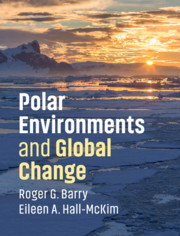Book contents
- Reviews
- Polar Environments and Global Change
- Polar Environments and Global Change
- Copyright page
- In memoriam
- Content
- Figures
- Boxes
- About the Authors
- Preface
- Acknowledgments
- 1 The Setting, History of Studies, and the Climatic Role of the Cryosphere
- 2 Paleoclimatic History
- 3 Observing Polar Environments
- 4 Atmospheric and Oceanic Circulation and Climate
- 5 Terrestrial Environments and Surface Types of the Polar Regions
- 6 Ice Sheets and Ice Shelves
- 7 Oceanic Environments
- 8 The Third Pole
- 9 Future Environments in the Polar Regions
- Appendix A Polar Institutes
- Glossary
- Index
- References
2 - Paleoclimatic History
Published online by Cambridge University Press: 27 July 2018
- Reviews
- Polar Environments and Global Change
- Polar Environments and Global Change
- Copyright page
- In memoriam
- Content
- Figures
- Boxes
- About the Authors
- Preface
- Acknowledgments
- 1 The Setting, History of Studies, and the Climatic Role of the Cryosphere
- 2 Paleoclimatic History
- 3 Observing Polar Environments
- 4 Atmospheric and Oceanic Circulation and Climate
- 5 Terrestrial Environments and Surface Types of the Polar Regions
- 6 Ice Sheets and Ice Shelves
- 7 Oceanic Environments
- 8 The Third Pole
- 9 Future Environments in the Polar Regions
- Appendix A Polar Institutes
- Glossary
- Index
- References
Summary
- Type
- Chapter
- Information
- Polar Environments and Global Change , pp. 21 - 66Publisher: Cambridge University PressPrint publication year: 2018

